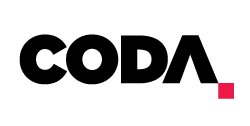Airway Choices – In The Era of Many Choices
Reuben Strayer and Duncan Grossman discuss all things airway. Specifically, how the introduction of many airway technologies at once–some of them revolutionary, some not–have confused our airway strategy. So how can we incorporate the best of these technologies into contemporary airway management?
They begin with a big question – what equipment should you choose?
There are many options, including direct or video laryngoscopy as well as multiple versions of the laryngoscope blade itself. As Reuben explains, all these terms can be confusing and are often imprecise.
Direct laryngoscopy clears a line of sight between one’s eyes and the glottis to visual it. This is unlike video laryngoscopy which uses a camera to visual the glottis. The next distinction is the type of blade – standard geometry versus hyperangulated blades.
The differences between – and the varying uses of – standard geometry blades and hyperangulated blades is discussed. This discussion will clear up confusion about the nomenclature for all clinicians. The long and the short of it is that a camera can be attached to both standard geometry and hyperangulated blades allowing video laryngoscopy with both. It depends on the clinician’s comfort and training as to which one you will reach for.
However, using a hyperangulated blade does make viewing the cords easier. The hyperangulated blade also requires less force, which is favourable in instances of cervical spine injuries or tongue masses. But, there are downfalls, and Reuben takes us through what to expect.
The standard geometry blade on the other hand is faster, and easier to utilise suction. It is also easier to use a bougie when using a standard geometry blade. Moreover, the standard blade video laryngoscopy uses the same skill set as a direct laryngoscopy and this is beneficial for new learners.
With all the new, wonderful technology available to us, should trainees bother learning traditional techniques?
Reuben contends they should for a few reasons. The first being that technology is fragile and can let you down at any moment. The second being that standard geometry video laryngoscopy contains within it the older technique – just with the addition of a video. Therefore, the way to get good at direct laryngoscopy is by getting very, very good at video laryngoscopy.
Jump onboard and join Reuben and Duncan as they provide a masterclass on airways.
Airway Choices – In The Era of Many Choices by Reuben Strayer and Duncan Grossman
For more like this, head to our podcast page #CodaPodcast
Reuben Strayer
Reuben Strayer was born on the shores of Lake Michigan but raised and schooled in Texas until emigrating to balmy Montreal for a residency in emergency medicine and is now based in New York City. His clinical areas of interest include airway management, analgesia, opioid misuse, procedural sedation, agitation, decision-making and error. His extra-clinical areas of interest include sweeping generalizations and jalapeno peppers. He lures himself out of bed with chocolate dipped in peanut butter before heading to Maimonides Medical Center, in Brooklyn, where he is happily employed.
Duncan Grossman
Duncan Grossman completed his emergency medicine residency at Maimonides Medical Center in Brooklyn, NY and is now the medical education fellow at St. Joseph’s University Medical Center in Paterson, NJ.





